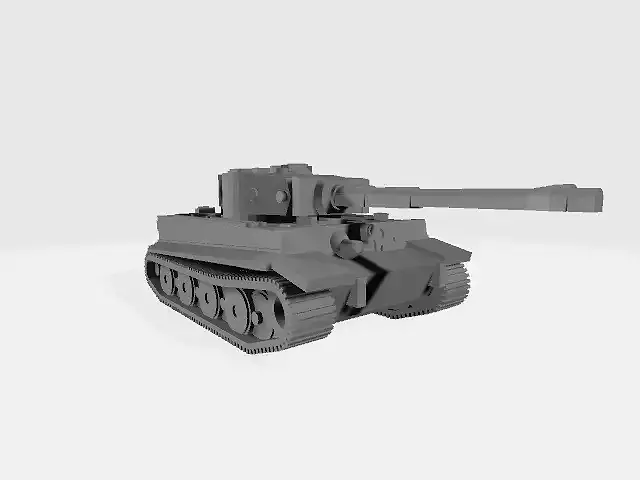1/38
Warmaking/ war making
The package includes:-Jagdpanzer IV-Kubelwagen-Marder III-Opel Maultier-Opel Radio Truck
- Panther A-Panzer IV-RSO-Schwimmwagen-Sdkfz 7-1-Sdkfz 234-2 Puma-Sdkfz 250-Sdkfz 251-tanks-Tiger-Wespe-churchill IV-Flakpanzer 38t-Jagdpanther
The Jagdpanzer IV was a turretless casemate tank used by the German Wehrmacht during World War II. The main task of the Jagdpanzer IV was to engage enemy tanks and assault guns.
The designation Kübelwagen or Kübelsitzwagen can be traced back to the beginning of the development of off-road military passenger cars. In order to achieve the lowest possible weight, the doors were omitted on some models. They were replaced by cloth tarpaulins or dispensed with altogether. To prevent occupants from falling out of the vehicle while driving, bucket seats were installed to provide better support for the driver and passenger. These seats were colloquially referred to as buckets because of their tub-like shape, and the vehicles in which they were installed were called bucket seat cars or bucket cars for short. Over time, this designation became synonymous with all vehicles of this type, regardless of whether or not they were equipped with so-called bucket seats (half-shells). Among others, the VW Type 82 is associated with the designation Kübelwagen; however, it is much older and not manufacturer-specific.
The Marder III (Sd.Kfz. 138 and 139) was a tank destroyer of the German Wehrmacht from World War II.
The Sonderkraftfahrzeug 3 Maultier (Sd.Kfz. 3) was a half-track vehicle used by the German Wehrmacht during World War II.
Opel Blitz (Blitz being German for lightning) was the name given to various light and middle-weight trucks built by the German Opel automobile manufacturer between 1930 and 1975. The original logo for this truck, two stripes arranged loosely like a lightning symbol in the form of a horizontally stretched letter Z, still appears in the current Opel logo. The Blitz name was then applied to the British-made Bedford CF when it replaced the Blitz in certain markets.
The Panzerkampfwagen V (suggestive name: Panther; Sd.Kfz. 171) was a medium German tank in World War II. It was developed by MAN in response to the Soviet T-34. The Panther was intended to replace the other German medium tanks, but ended up being used in conjunction with the Panzer IV, which continued to be produced. From 1943 until the end of the war, about 6000 vehicles were built in various versions by several manufacturers and used both on the Eastern Front and in the West.
The Panzerkampfwagen IV (short PzKpfw IV or Panzer IV) was a medium German tank of World War II. Initially produced only in very small numbers, the Panzer IV, developed by Krupp and produced from 1937 until the end of the war, became the most widely built German armored fighting vehicle, with 8500 built. Initially equipped with a short gun, the tank was originally intended as a support vehicle, but its operational spectrum changed fundamentally with the installation of a long gun. Although it did not achieve the notoriety of a Panther or Tiger due to its reception in military literature, it was the most important German tank in the second half of the war. The Panzerkampfwagen was used in different versions on almost all fronts. In addition, the chassis served as the basis for numerous other weapon carriers.
The Raupenschlepper Ost (RSO for short) was a tracked tractor of the World War II era of German production. It was specially developed for the difficult ground and weather conditions in the war against the Soviet Union.
The Volkswagen Type 166 (also Kfz. 1/20) is a floatable off-road vehicle with four-wheel drive. It was developed on the basis of the KdF-Wagen and the Volkswagen Type 82 for the Wehrmacht and Waffen-SS. From the fall of 1942 to the summer of 1944, over 14,000 units were produced at the Volkswagen plant near Fallersleben. Colloquially, the Type 166 is also referred to as the VW Schwimmer or generally as the Schwimmwagen.
The Panzerkampfwagen VI (suggestive name: Tiger) was a heavy German tank produced by the sole manufacturer Henschel in Kassel from 1942 to 1944 and used by the Wehrmacht from late summer 1942. Due to its powerful main armament and high armor protection, the Tiger was one of the most combat-effective tanks of World War II.
The Panzerhaubitze Wespe (Sd. Kfz. 124) was a self-propelled gun of the German Wehrmacht in World War II.
The Churchill, or Tank, Infantry, Mk IV (A22) was a British heavy assault infantry support tank (English infantry tank) used by Commonwealth and Soviet Union troops in World War II from 1942. The vehicle type was used until the Korean War. The tank was named after the politician Winston Churchill.
The Flakpanzer 38(t) was the German Wehrmacht's first anti-aircraft tank in World War II, and it was designed as such.
In 1943, the threat posed to German troops by Allied air forces, especially low-flying aircraft, became increasingly acute. German weapons engineers worked feverishly on a wide variety of anti-aircraft tanks to provide better protection for the front-line units and the supply units.
The Jagdpanzer V (suggestive name: Jagdpanther)[1] (Sd.Kfz. 173) was a fighter tank used by the German Wehrmacht during World War II.
Designed by: manifold_destiny
REVIEWS & COMMENTS
accuracy, and usability.






































